Yayoi Kusama Museum: A Permanent Place For The Artist’s Eternal Soul
The only five-story museum dedicated to the artist's lifework
Kusama’s legendary art is now available for viewing in Tokyo, and it’s here to stay.
In October 2017, the art-loving Tokyoites cheered in unison. After years of anticipation and exhibitions happening all over the globe, at last, Yayoi Kusama was opening a permanent place to exhibit her art — in her native Japan. The five-story museum, located in Shinjuku, Tokyo, is currently the only place in the world where visitors can see the legendary avant-garde artist’s work permanently, and — as expected — is gathering much attention both domestically and globally.
Inspired to see what’s inside, I visited the museum — and after doing so would wholeheartedly recommend that you pay it a visit as well. Here’s a glimpse of what you can expect there as you immerse in Kusama’s endless psychedelic world of abstract expressionism!
Yayoi Kusama: The Artist
Yayoi Kusama, Japan’s most admired avant-garde artist, was born in 1929 in Matsumoto, Nagano Prefecture. From a young age she began experiencing visual and auditory hallucinations, which later in her life she described as “flashes of light, auras, or dense fields of dots,” paving her way toward creating her signature net and polka-dot patterned paintings and designs.
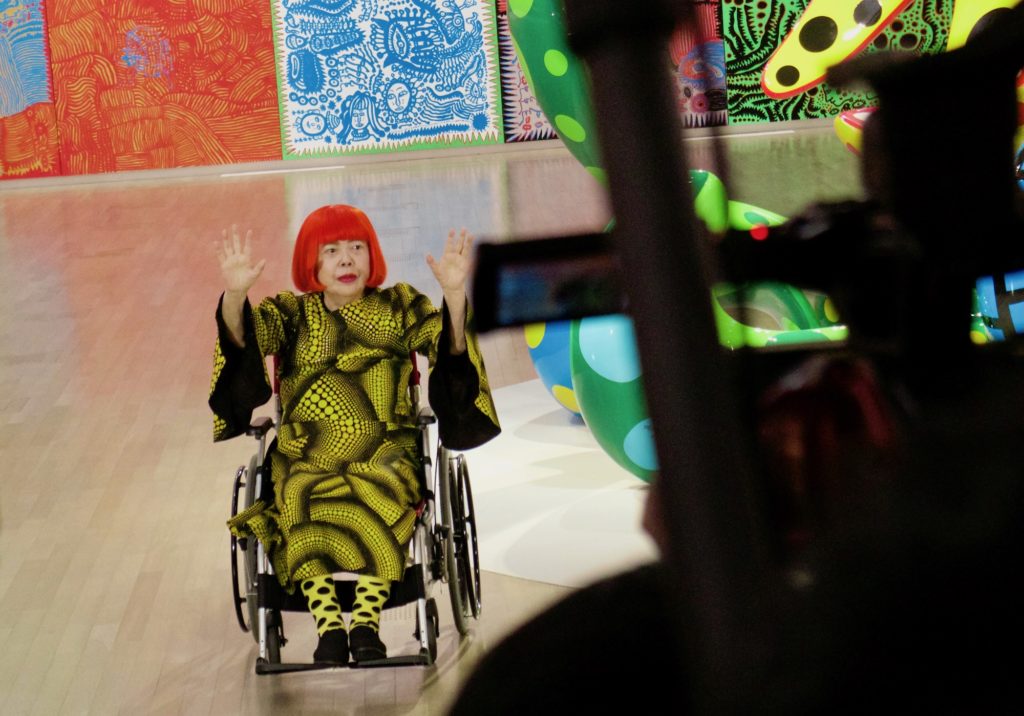
Yayoi Kusama at a pre-opening press event of her exhibition “Yayoi Kusama: My Eternal Soul” at The National Art Center, Tokyo, Feb 17, 2017.
Well on her way of becoming an established artist in Japan, Kusama wanted to succeed abroad as well. Though initially intending to travel to France, she changed her mind after browsing through a book of paintings by American artist Georgia O’Keeffe at a second-hand store in her native Matsumoto and decided to head to the U.S. In the late 1950s she moved to New York where she continued producing paintings influenced by abstract expressionism, embracing New York’s avant-garde art movement in the early 1960s. She also participated in the U.S.’ hippie counterculture by creating several events in which naked people were drawn by large dots. In 1973 she returned to Japan in an ill health and has since been almost permanently living in a mental health hospital in Tokyo.
Her polka dots are iconic, her pumpkins are ingenious, her infinity rooms are dazzling.
Influenced by a traumatized youth of problematic family ties, her father’s numerous infidelities, her mother’s struggles and physical abuse, and unstable mental health, Kusama’s art is hugely influenced by autobiographical themes of sexuality, feminism, minimalism and surrealism.
Now, one of the most renowned Japanese artists of all times, the 88-year-old artist has held exhibitions at numerous museums throughout the world, including Tate Modern, London and the Pompidou Center in Paris. Kusama was named the World’s Most Popular Artist in 2014 and received Japan’s Order of Culture in 2016. Her art defies any boundaries and is simple yet complex, frenetic yet sophisticated. Her polka dots are iconic, her pumpkins are ingenious, her infinity rooms are dazzling. And most importantly — at the age of 88 she is still unstoppable.
The Museum: Finally a place of her own
The tall, contemporary-designed white building of Kusama’s newly opened museum was designed by the architectural firm Kume Sekkei and features modernist exterior with rounded corners. The building is easily identified by Kusama’s trademark of huge grey polka dots, randomly surfaced on the curved entrance glass wall.
The five-storied interior is equally minimalistic consisting of individual galleries with tall ceilings, pristine white walls and floor-to-ceiling glass windows. The museum is operated by the Yayoi Kusama Foundation created by the artist herself to preserve her art.
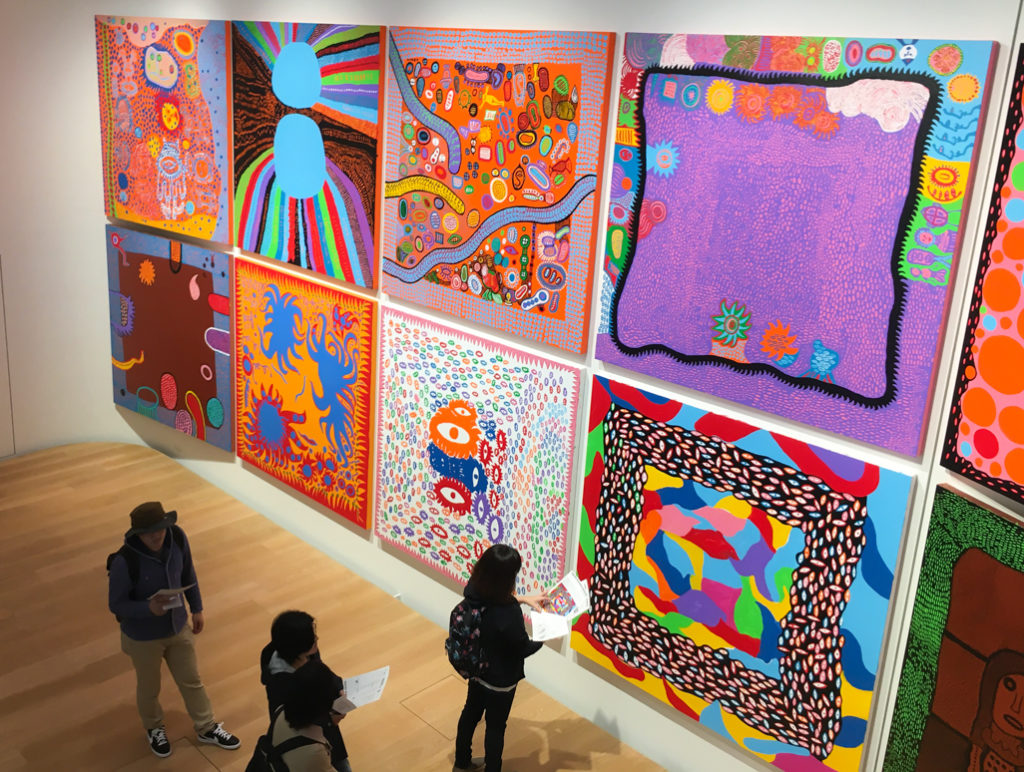
The 3rd floor of the Yayoi Kusama Museum. Currently on display is the ‘Creation is a Solitary Pursuit, Love is What Brings You Closer to Art’ Exhibition. Until Feb 25, 2018.
The inaugural exhibition at the newly opened museum — “Creation is a Solitary Pursuit, Love is What Brings You Closer to Art” — includes 45 pieces of art and is arranged thematically throughout five floors providing a coherent transition as you make your way up to the top floor.
The presented collection traces her long struggling years as a free artist, starting with 27 black and white silkscreen on canvasses on the second floor, taken from her “Love Forever” series from 2004-2007. A collage of women’s side profiles facing different directions, seemingly caught in a labyrinth of repetitive eye motifs, miniature doll figurines dressed in childlike attires, and dots and curved lines everywhere, reflect on a chaotic yet protective world of a woman’s aspiration to connect freely with the universe.
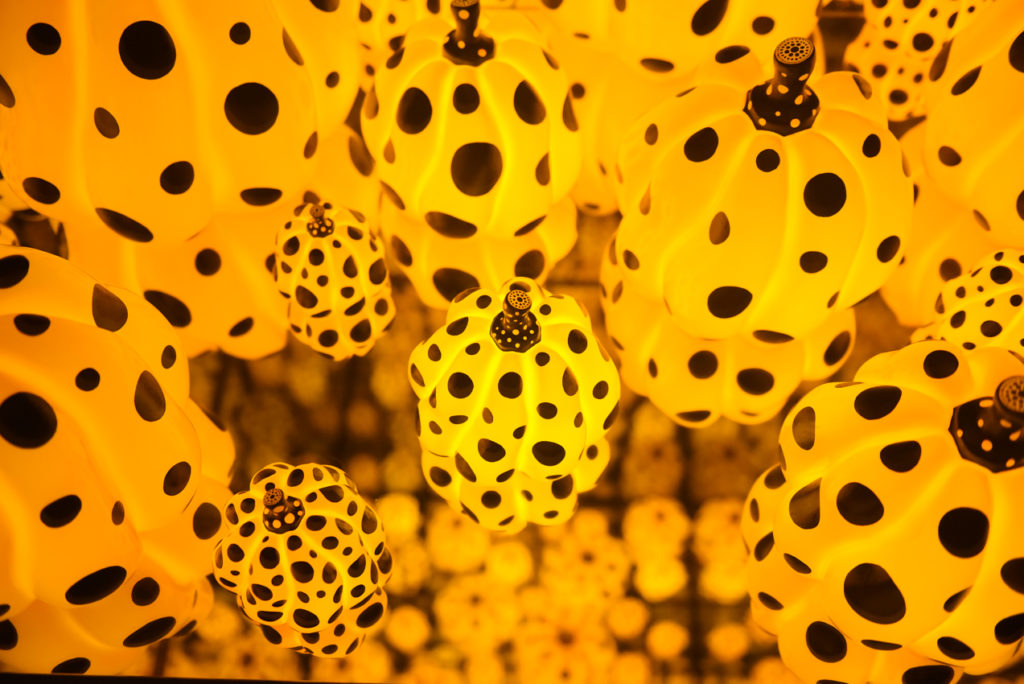
Yayoi Kusama’s mirrored installation, ”Pumpkins Screaming About Love Beyond Infinity,” at the Yayoi Kusama Museum.
As you make your way up to the third floor, you are greeted with a punch of color that characterizes her more recent paintings from ‘My Eternal Soul’ series and serve as a stark contrast to the collection downstairs. The exhibited 16 acrylic pieces scream with energetic colors, forms and lines, spanning laborious work between 2013-2017 that have been displayed worldwide.
No Yayoi Kusama exhibition would be complete without the infinity room and her beloved pumpkin staged on the fourth and top floors. You can enjoy the world-famous mirrored installation for 30 seconds at a time, and are allowed to re-enter as many times as you wish during your allocated 90-minute time slot. The current infinity room displays myriad of pumpkins, creating an infinite pumpkin-land. There is something inexplicably captivating about watching the reflection of millions of glowing pumpkins.
On the last floor, there is a reading room of books about Yayoi Kusama’s art and the new installation created specifically for the museum — a globular mosaic pumpkin sculpture. It is kept inside an uncovered courtyard, a glittering ball of gold and pink mosaic tiles in stark contrast to the minimalist white walls and grey skies surrounding it.
There is something inexplicably captivating about watching the reflection of millions of glowing pumpkins.
Of course, polka dots are omnipresent. Make sure you take the elevator while heading downstairs. Its mirrored walls are covered in red polka dots — a perfect spot to take a selfie! Before you leave, you can also purchase souvenirs in the gift shop located on the first-floor reception area.
The current collection will run until February 25, 2018 and the museum will host two exhibitions annually, focusing on Kusama’s entire repertoire, including her ‘Infinity Net’ paintings, phallic sculptures and, most importantly, the legendary polka dots.
Note for visitors: You must buy tickets in advance via the museum’s official website and the entry is by 90-minute time slot, only four per day. Fifty tickets are allocated per slot. Tickets go on sale on the first day of each month, for dates in the month after next, at 10 a.m. sharp Tokyo time through the museum’s official ticketing website.
The Deets
Address: 107 Bentencho, Shinjuku-ku, Tokyo
Open: 11 a.m.-5 p.m., Thursday through Sunday. Closed Mondays, Tuesdays and Wednesdays.
Cost: ¥1,000 (Adults), ¥600 (children aged 6 to 18), Free for children under 6.












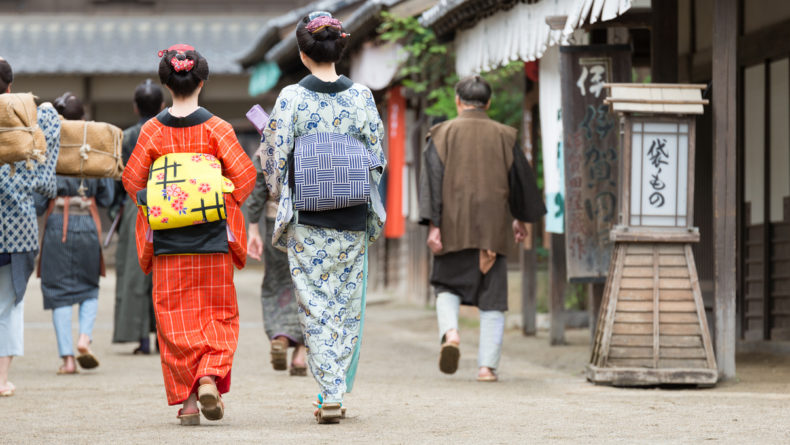
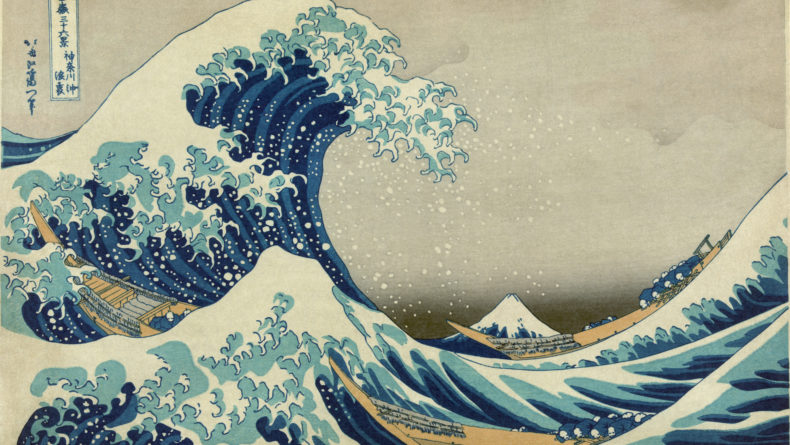
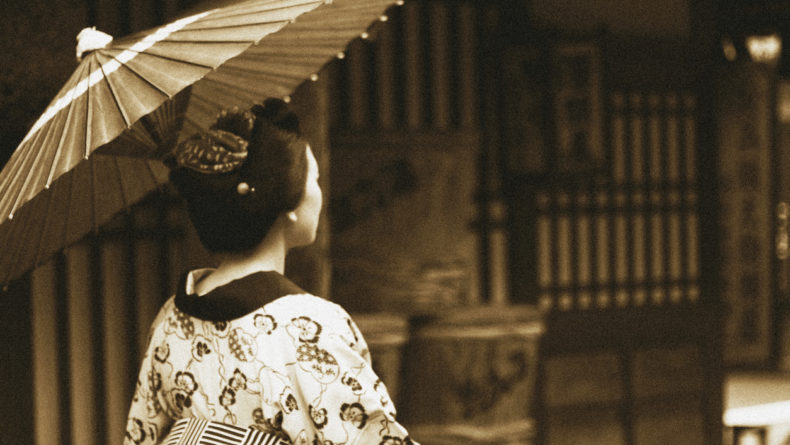

Leave a Reply